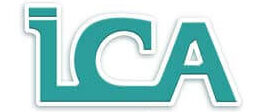- Increased Efficiency
One of the primary benefits of remote monitoring and control is increased efficiency. In a traditional industrial environment, operators must physically be present to monitor equipment and processes. This can result in delays in identifying issues and responding to them. With remote monitoring and control, operators can receive real-time data on equipment performance and process conditions. This enables operators to identify potential issues early and take proactive measures to address them before they become major problems. By minimizing downtime and reducing the need for manual intervention, remote monitoring and control systems can significantly increase efficiency.
- Reduced Costs
Remote monitoring and control systems can help reduce costs in several ways. By identifying and addressing issues early, downtime and repair costs can be minimized. Remote monitoring systems can also help optimize energy usage, reducing energy consumption and costs. In addition, remote monitoring and control can help reduce labor costs by minimizing the need for manual intervention. By leveraging automation and technology, operators can perform their jobs more efficiently and effectively.
- Improved Safety
Remote monitoring and control systems can significantly improve safety in industrial environments. By providing real-time data on equipment performance and environmental conditions, operators can identify potential safety hazards and take proactive measures to mitigate risks. Additionally, remote monitoring and control can help reduce the need for manual intervention, which can minimize the risk of accidents.
- Increased Flexibility
Remote monitoring and control systems offer increased flexibility by allowing operators to monitor and control industrial processes from anywhere, at any time. This enables operators to respond quickly to issues, regardless of their location. For example, an operator could monitor a process from home or while traveling, and take action as needed. This level of flexibility can help improve overall process efficiency and productivity.
- Process Optimization
Remote monitoring and control systems can help optimize industrial processes by providing real-time data that can be used to identify inefficiencies and areas for improvement. By analyzing data and making informed decisions, operators can optimize processes to improve efficiency and productivity. Additionally, remote monitoring and control systems can be integrated with other technologies, such as machine learning and artificial intelligence, to further optimize processes and drive continuous improvement.
In summary, remote monitoring and control systems offer significant benefits for industrial operations, including increased efficiency, reduced costs, improved safety, increased flexibility, and process optimization. By leveraging these technologies, industrial organizations can drive continuous improvement, optimize processes, and achieve their goals. If you’re interested in learning more about remote monitoring and control, please don’t hesitate to contact us for more information. Our team of experts is here to help you achieve success in your industrial operations.
Find us on Instagram